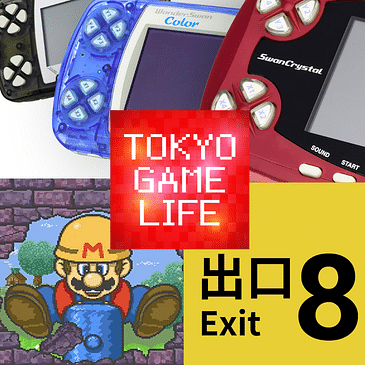Kelsey Lewin joins the pod to chat about WonderSwan turning 25 years old! We examine the unique legacy of the handheld, recommend what games to put on your radar, and chronicle the saga of getting a pregnancy peripheral. In the games, I look at the first western release ever of Wrecking Crew ‘98 and the Japanese indie horror hit The Exit 8!
Follow our guest!
Twitter: https://twitter.com/kelslewin
Bluesky: https://bsky.app/profile/kelslewin.bsky.social
Instagram: https://www.instagram.com/tentikels
(0:00) - Intro
Feature
(0:51) - WonderSwan w/ Kelsey Lewin
Games
(35:10) - Wrecking Crew ‘98
(41:56) - The Exit 8
News
(46:56) - New NSO games, Indie World
(48:16) - Closing
Social media:
Twitter: https://twitter.com/TokyoGameLife
Instagram: https://www.instagram.com/tokyogamelife/
YouTube: https://www.youtube.com/@tokyogamelife
Threads: https://www.threads.net/@tokyogamelifeBluesky: https://bsky.app/profile/tokyogamelife.bsky.social
Website: https://tokyogamelife.com/
Like and subscribe on your favorite podcast app!
Send questions and suggestions to: tokyogamelife@gmail.com



